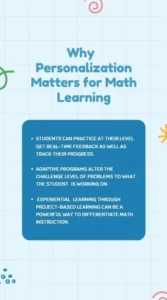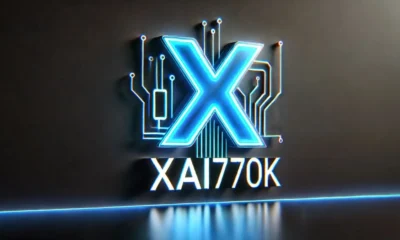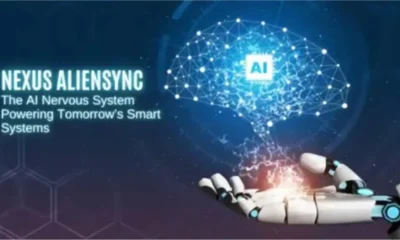EDUCATION
How Schools May Be Failing to Personalize Learning – A New Approach to Math Success

Many students have trouble with math, and it’s not always because they’re not capable. The real problem is that schools employ a one-size-fits-all approach to instruction most of the time. It fails to account for the fact that every student learns differently and at a different pace.
But the truth is, some students require more time, some need alternative methods of instruction, and plenty just need a boost. This is where a math tutor for 7th-grade can be a real game-changer, providing personalized support that caters to a student’s specific requirements.
A One-Size-Fits-All Approach Is the Wrong Recipe
The vast majority of schools have a pre-organized curriculum that they aim to get through in a set period. Teachers have limited flexibility to adjust their pace because they must stay in line with state or district requirements.
This can lead to bored students who grasp concepts quickly and struggling students who take longer to understand specific ideas. Their break from math eventually worsens, and over time, many of these students become discouraged and lose faith in themselves, which compounds the challenge of math. Math tutor for 7th grade students who are struggling with the additional focus they need to stay up to speed and regain confidence.
With 25 or more students in a room, it is virtually impossible for a teacher to give individual time to each student. Some students do not ask questions out of fear of being judged by their peers. Others may not even know they need help until they’ve already gotten too far behind.
Math teaching also relies heavily on standardized testing. The school emphasizes test scores as opposed to actual knowledge, which makes students learn formulas rather than actual mathematics. This approach promotes rote learning over the development of critical thinking and problem-solving skills two vital skills in math and other subjects.
Why Personalization Matters for Math Learning
A customized method of learning math allows students to learn at their own pace. Instead of putting everyone through the same lessons, schools need to provide more flexible ways to learn. The strategies used in synchronous distance learning are those that meet the different learning styles of students, providing them with a better grasp of concepts and helping to build their confidence level.
Technology can help to tailor math education to individual needs. Through online platforms, students can practice at their level, receive real-time feedback, and track their progress. With interactive tools, math is less scary and more fun.
Adaptive programs alter the challenge level of problems to what the student is working on, so they are always challenged without being frustrated. Programs with adaptive learning adjust problem complexity based on performance to help students never be overwhelmed.
Additionally, experiential learning through project-based learning can be a powerful way to differentiate math instruction. Real-world issues show students the application of math concepts. It allows them to remain engaged and have critical thinking skills instead of just going through the motions in a textbook.

How Teachers Help Customize Math Instruction
Although technology is beneficial, it is teachers who play the biggest role in a student’s learning journey. To personalize math education, schools need to provide teachers with the tools and training to learn this.
Teachers, too, need the autonomy to stray from the script of prescriptive curriculums. They should be able to calibrate a student’s progress and adjust lessons based on that assessment. Personalized teaching is not so much about varying speeds but more about diagnosing each student’s strengths and weaknesses and responding accordingly.
What Parents Can Do to Fill in the Gaps
Schools cannot solve the problem by themselves. The system works well when parents are anesthetized and continue to participate, and may not be for kids who would rather eat glass than have a parent there, who typically needs that more. Having a positive attitude about math, providing an environment to study at home and extra help, if needed, all help children succeed.
One of the key methods to get personalized learning is to hire a tutor. A tutor can evaluate a student’s strong and weak points and create a plan that is particular to their needs. This added support fosters confidence and can stop small challenges from escalating into larger issues.
One-on-one, they may feel more comfortable asking questions that they would be less likely to ask in a classroom setting, which is why tutoring is a great supplement to classroom learning.
Parents should make the most of online learning resources.
Many of them, both free and paid, offer interactive exercises, video explanations, and personalized study plans. Students who experience math in multiple ways will have a better grasp of the subject matter.
This Is a Differently Shaped Imaginary Math
Every student is different, and that is key to math success. Schools should be flexible that allow personalized instruction, rather than expecting all students to learn the same way. It can be technology, small group learning, tutoring, the ways to make sure that no one feels lost in the classroom.
One possible solution would be competency-based learning, where students progress to the next concept only when they have mastered the current concept. This keeps students from moving on with knowledge gaps. Gamification techniques can be utilized in schools to reinforce math skills by making the lessons rewarding challenges instead of tedious tasks.
Additionally, educators, parents, and students must collaborate. Schools should communicate openly about learning needs and offer resources that enable students to take ownership of their education. When students have a voice in their learning, they feel more involved and motivated.
If students adapt to these changes, they can learn math and have more faith in themselves. This motivates students, keeps them engaged, and helps them achieve their highest potential when they believe they can achieve. Learning should be about much more than passing tests it should be feeding a lifelong love of learning and the women in today’s stories know that.
Conclusion
Schools must abandon the antiquated, one-size-fits-all model for math education. With the personalized learning approach, all students can be set up to succeed. Whether it is in the form of tutoring adaptive technology or small group instruction, students thrive when lessons are aligned with their learning styles and learning pace.
FAQs
1. So many students don’t do well in math. Why?
Most students face challenges because teachers do not teach to their learning style or speed.
2. How can parents know if their kid needs additional help in math?
Signs include lower-than-usual test scores, irritation with homework, and a tendency to avoid math-related endeavors.
3. How can we make math more attractive to and fun for your students?
Math can become more fun and easier to understand with the use of interactive tools, real-life examples, and personalized learning strategies.
-

 BIOGRAPHY7 months ago
BIOGRAPHY7 months agoBehind the Scenes with Sandra Orlow: An Exclusive Interview
-

 HOME1 year ago
HOME1 year agoDiscovering Insights: A Deep Dive into the //vital-mag.net blog
-

 HOME1 year ago
HOME1 year agoSifangds in Action: Real-Life Applications and Success Stories
-

 BIOGRAPHY1 year ago
BIOGRAPHY1 year agoThe Woman Behind the Comedian: Meet Andrew Santino Wife




























